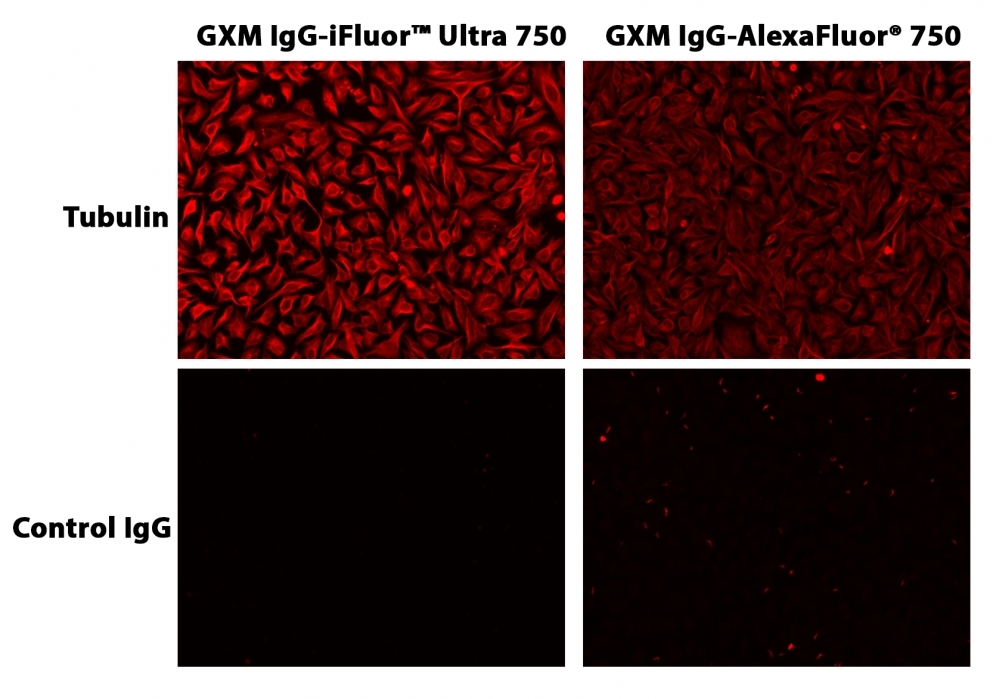iFluor® Ultra 750 succinimidyl ester
Fluorescent dye-conjugated antibodies provide a tool for identifying proteins in many applications including fluorescent cell imaging, flow cytometry, western blotting, immunohistochemistry and more. The advantages of using a fluorescently labeled antibody include higher sensitivity, multiplexing capabilities, and ease of use. iFluor® Ultra family is a recent upgrade of our popular iFluor® dyes and optimized for labeling antibodies used for fluorescence imaging and flow cytometry applications. Antibody conjugates prepared with iFluor® Ultra 750 are far superior to the conjugates of other existing similar dyes such as Cy7, Dylight 755, IRDye750 and Alexa Fluor® 750. iFluor® Ultra 750 conjugates might be the brightest among the NIR dye antibody conjugates. They are significantly brighter than the conjugates prepared with Cy7, Dylight 755, IRDye750 and Alexa Fluor® 750 under the same conditions. Additionally, the fluorescence of iFluor® Ultra 750 is not affected by pH (4-10). iFluor® Ultra 750 SE dye is reasonably stable and shows good reactivity and selectivity with protein amino groups. iFluor® Ultra 750 has spectral properties and reactivity similar to Cy7, Dylight 755, IRDye750 and Alexa Fluor® 750.


| Catalog | Size | Price | Quantity |
|---|---|---|---|
| 71680 | 1 mg | Price | |
| 71681 | 100 ug | Price | |
| 71682 | 5 mg | Price |
Physical properties
| Molecular weight | 1426.78 |
| Solvent | DMSO |
Spectral properties
| Absorbance (nm) | 750 |
| Correction factor (260 nm) | 0.04 |
| Correction factor (280 nm) | 0.05 |
| Correction factor (565 nm) | 0.021 |
| Correction factor (650 nm) | 0.149 |
| Extinction coefficient (cm -1 M -1) | 250000 1 |
| Excitation (nm) | 749 |
| Emission (nm) | 773 |
| Quantum yield | 0.32 1 |
Storage, safety and handling
| H-phrase | H303, H313, H333 |
| Hazard symbol | XN |
| Intended use | Research Use Only (RUO) |
| R-phrase | R20, R21, R22 |
| Storage | Freeze (< -15 °C); Minimize light exposure |
| UNSPSC | 12171501 |
Documents
Contact us
| Telephone | |
| Fax | |
| sales@aatbio.com | |
| International | See distributors |
| Bulk request | Inquire |
| Custom size | Inquire |
| Technical Support | Contact us |
| Request quotation | Request |
| Purchase order | Send to sales@aatbio.com |
| Shipping | Standard overnight for United States, inquire for international |
Page updated on December 15, 2025

